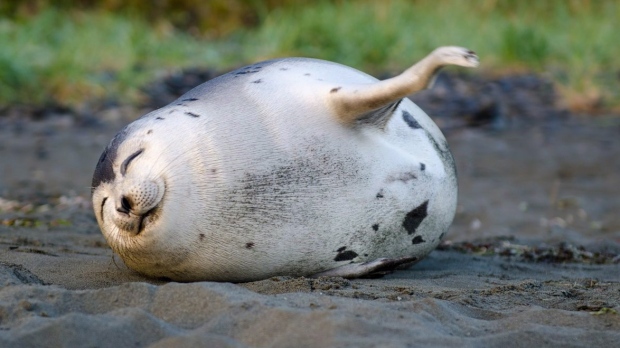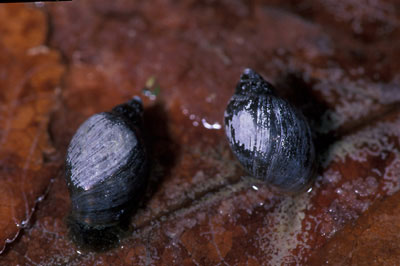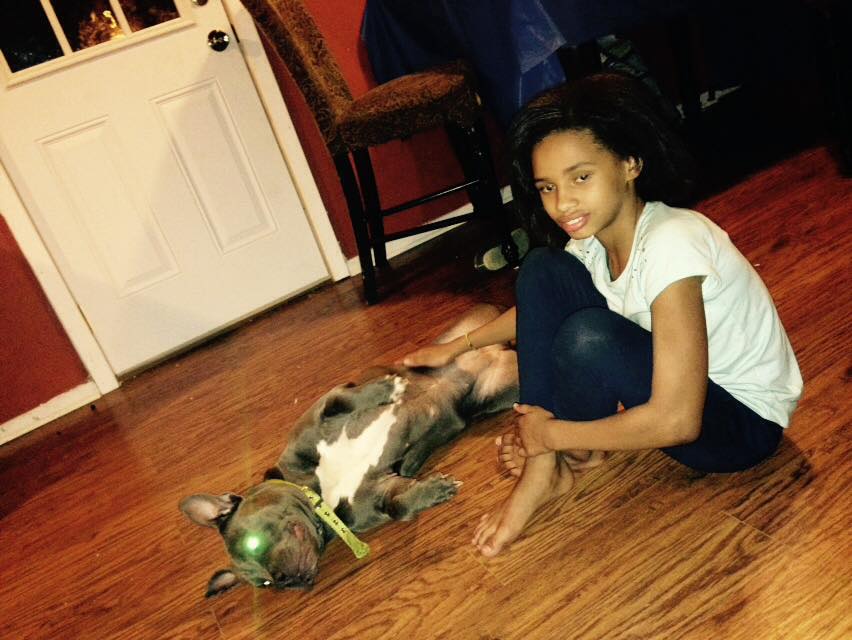A young harp seal who so charmed spectators that people came up to pet the critter has died just days after a photograph of the marine mammal smiling caught worldwide attention.
The photographer, Leona Rockwood, went to take pictures early Labour Day morning at a popular Newfoundland beach.
At Salmon Cove Sands on the Avalon Peninsula, Rockwood spotted a very calm animal. When she snapped some shots, the seal raised its head and appeared to smile at her.
“He looked totally relaxed. If I talked to him, he would go onto his back, or his belly, or his side, and move his flippers around,” she said.
“He seemed totally entertained, just having someone there.”
Rockwood, a hobbyist photographer, had never been that close to a seal, but kept her distance.
But others didn’t respect the seal’s wildness. Beachgoers began arriving to see the seal and a woman posted a video of herself on Facebook. In the video, she’s petting the seal.
That’s when the Department of Fisheries and Oceans Canada issued a statement.
“We would like to remind people that it is illegal to disturb a marine mammal and human interaction can disturb an animal’s normal life processes and can result in injury or death of the animal,” said department spokeswoman Sara Dunderdale in an email.
“We are aware of videos circulating on social media showing individuals interacting with the seal in Salmon Cove and our Fishery Officers are looking into it.”
The seal was found dead on Wednesday and the DFO will soon begin a necropsy at its St. John’s headquarters to determine the cause of the animal’s death.
“We’ve got it on ice and we’ll look at it Monday,” Garry Stenson, a research scientist with the department, said on Saturday.
“From a cursory look at it, it didn’t look to be in particularly bad condition, and it didn’t seem to have any wounds that we could see, but we’ll have a better idea.”
Regardless of the seal’s cause of death, he said people need to remember that even though seals may look cute — with their dark, dewy eyes and dog-like snouts — they are wild animals and may, in some instances, attack if they feel unsafe.
“If you go up to a wild animal, it’s like going up to a strange dog. It may bite you,” said Stenson, adding they carry a bacteria that could cause an infection called “seal finger,” which would require specialized treatment at the hospital.
But more often, Stenson said, a seal will freeze up and try to get away if they feel threatened.
“You know how you see pictures of fawns, how they just freeze in the presence of danger? Seals will do that,” he said.
In the video of the woman petting the seal at Salmon Cove Sands earlier this week, the seal didn’t react much, which Stenson said is quite uncommon.
He added that seal sightings aren’t uncommon in Newfoundland and Labrador, and anyone who sees one should just leave it alone.
As for Rockwood, she said she was saddened by the seal’s death, but she was grateful for the chance to spend a few quiet moments with it before the summertime crowd flocked in.
“It’s a bit disturbing to think that maybe he was sick, and all these people were around,” she said.
“I’d like to think that having a bit of company around in his final moments might have been a good thing, but you don’t know, really.”
Photo credit: Leona Rockwood




